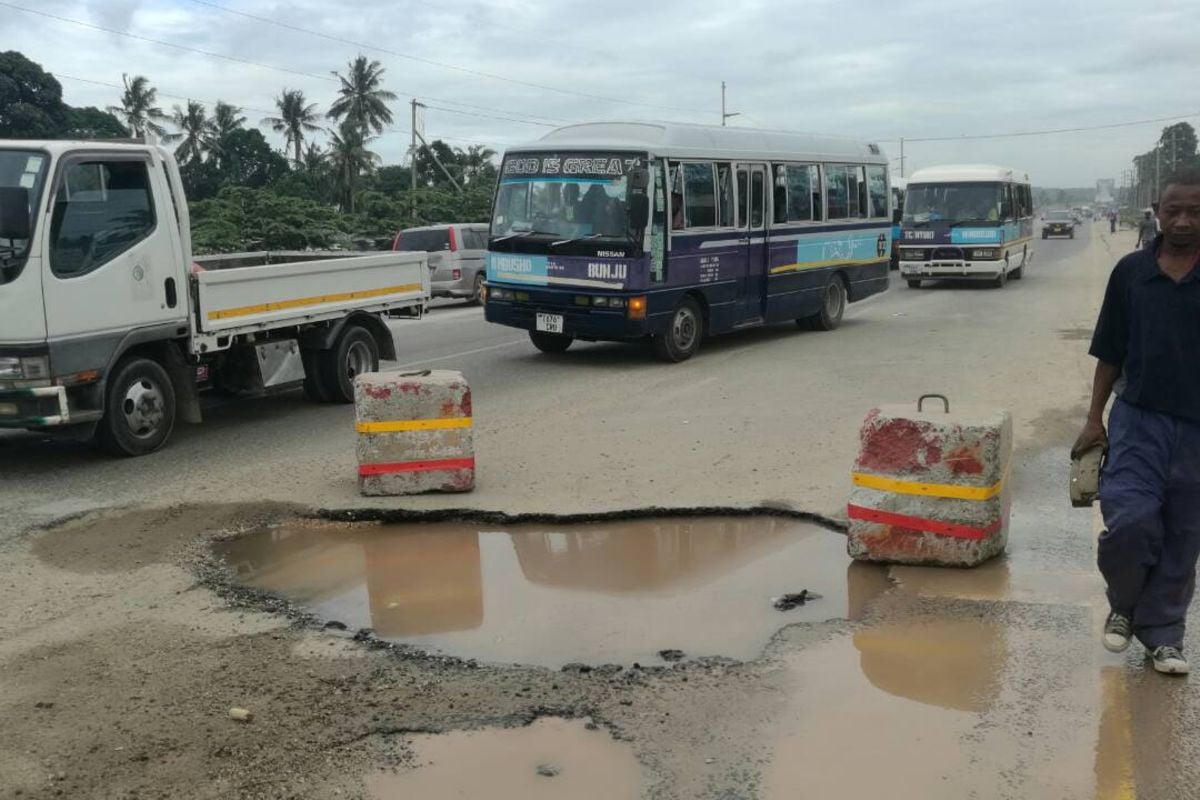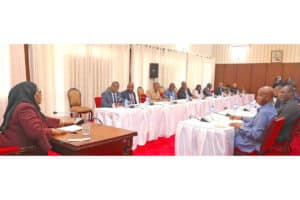
Dar es Salaam. lango kuu la kiuchumi Tanzania, barabara zake ni hatari kwa magari. Barabara kuu zote zipo kwenye ujenzi, zile za mitaani na zenye kuunganisha vitongoji, zimesheheni mashimo.
Hatari zaidi, upo mfumo wa kuziba mashimo kwa kuweka viraka. Mafundi wanachonga lile shimo, wanalitanua na kulipa umbo la pembe nne. Baada ya utanuzi huo, wanaliacha hadi miezi miwili. Hatari kwa madereva, hasa wageni wa barabara husika.
Wazoefu huendesha kwa uzoefu. Anafika mahali anapunguza mwendo kwa sababu ameshajua shimo lililochongwa lipo karibu. Hakuna taa wala alama za tahadhari kuwa mbele kuna shimo.
Miezi michache iliyopita nchi ilipita kwenye mafuriko. Dar es Salaam iliathirika. Miundombinu ikatoneshwa, sasa ni mibovu ajabu. Zile hadithi kuwa watu wanaoishi mabondeni ndiyo hawapo salama, tafsiri inahama.
Dar es Salaam kila sehemu ni bondeni. Hata maeneo yaliyopo uwanda wa juu yalikumbwa na mafuriko na sasa barabara ni taabani. Unapoendesha gari Dar es Salaam, nenda taratibu. Utaua chombo, unaweza kupoteza maisha pia.
Anzia Mikocheni hadi Tegeta, Mbezi Beach mpaka Ununio, usiku unaweza kukuta magari mitaroni. Ukimuuliza dereva, anasema alikuwa anakwepa shimo. Mwenyewe aliendesha mwendo wa kasi akidhani barabara ni salama. Dar siyo salama.
Ujenzi holela, fedha zinazidi nguvu sayansi. Utatuzi wa matatizo kwa kutumia mawazo kidogo yenye mtazamo wa muda mfupi, badala ya kufikiria miaka mingi ijayo. Hapa ndipo nchi inaumizwa na inauawa taratibu. Bila hatua za haraka tutarithisha watoto na wajukuu nchi mfu.
Mvua kidogo, barabara zinatengeneza matundu kila mahali. Dar es Salaam haina barabara ambayo unaweza kuendesha japo kilomita 120 kwa saa, hata kama barabarani upo peke yako na hakuna alama za udhibiti mwendo. Sababu barabara ni mbovu, haziaminiki. Ni mitego tupu kwa madereva.
Barabara zinazojengwa, zinabanwa na kuwekewa matofali yenye kuakisi taa. Yale matofali barabarani ni salama kama dereva unaendesha kipindi ambacho hakuna gari lingine linatokea unapoelekea. Hatari zaidi, dereva wa gari linalokuelekea awashe taa kali. Hutaona tofali. Madereva wengi huyagonga matofali na kuharibu magari.
Askari wa usalama barabarani na magari ya breakdown, kwao ni mtaji gari likigonga tofali barabarani. Mimi ni shuhuda wa tukio la gari aina ya Toyota IST, liligonga tofali eneo la Makumbusho, Kijitonyama, mbele ya Millenium Tower. Kulitoa gari pale kulipeleka Kituo cha Polisi Kijitonyama, kadirio la kilomita moja na nusu, breakdown walilipwa Sh250,000 na trafiki akataka apewe Sh150,000, eti ili amalize kesi.
Trafiki akasema, asingelipwa hiyo pesa, angeandika ripoti kwenda Tanroads kuwa gari lile, IST, liliharibu tofali la ukingo wa barabara. Ukiangalia, tofali ni zima, IST uso wa mbele umeharibika, hadi mifuko ya usalama (airbags), ilitoka.
Ni Tanzania na Watanzania. Trafiki (askari wa usalama barabarani), anafika kwenye ajali, hataki kujua watu ndani ya gari wapo salama kiasi gani, anaomba Sh150,000, eti ndiyo amsaidie mwenye gari kuepuka kesi. Unajiuliza, hata ukienda mahakamani, kesi ya uzito gani?
Kuhusu ubovu wa barabara Dar es Salaam, mashimo na uwekaji viraka unaochukua muda mrefu, inadhihirisha namna ambavyo ujenzi unafanyika chini kabisa ya viwango mbele ya viongozi wanaoomba bajeti, wanaopewa na kuzisimamia. Wataalamu pia wapo.
Janga la taifa ni rushwa na ufisadi. Viongozi na wataalamu wanaotegemewa kuisaidia nchi, wanafuja fedha za miradi, matokeo yake miundombinu inajengwa nchini ya kiwango. Makandarasi wanahonga kushinda zabuni. Vigezo vya kisayansi havina tija mbele ya mlungula.
Kifo cha nchi ni kuwa na viongozi wenye kuwaza leo badala ya kesho. Matatizo mengi Dar es Salaam ni ujenzi unaoingilia njia za maji. Mwenye fedha anahamisha uelekeo wa maji, matokeo yake madhara makubwa hutokea pale mvua zinaponyesha mfululizo. Maji yanapanda hadi kwenye miinuko.
Kama mapinduzi ya fikra hayatakaribishwa Tanzania, ikapatikana tiba ya jinsi ya kutatua matatizo ya watu kwa usahihi, rushwa ikachukiwa kutoka ndani ya fikra na moyoni, suluhu zikatazamwa za kudumu na kujenga dhamira ya kuiacha nchi salama kwa vizazi vijavyo, historia itatoa hukumu mbaya kwa hiki kizazi chetu kinachoishi sasa.
Ukipita Unguja, kasi ya ujenzi wa barabara ni kubwa. Barabara bora na imara kabisa. Unaweza kupata jawabu kwamba miaka mitatu ijayo, Unguja (Zanzibar), itakuwa jiji lenye barabara nzuri na za uhakika, wakati Dar es Salaam ikibaki hohehahe na barabara zake zinazoua magari.
Source: mwananchi.co.tz













